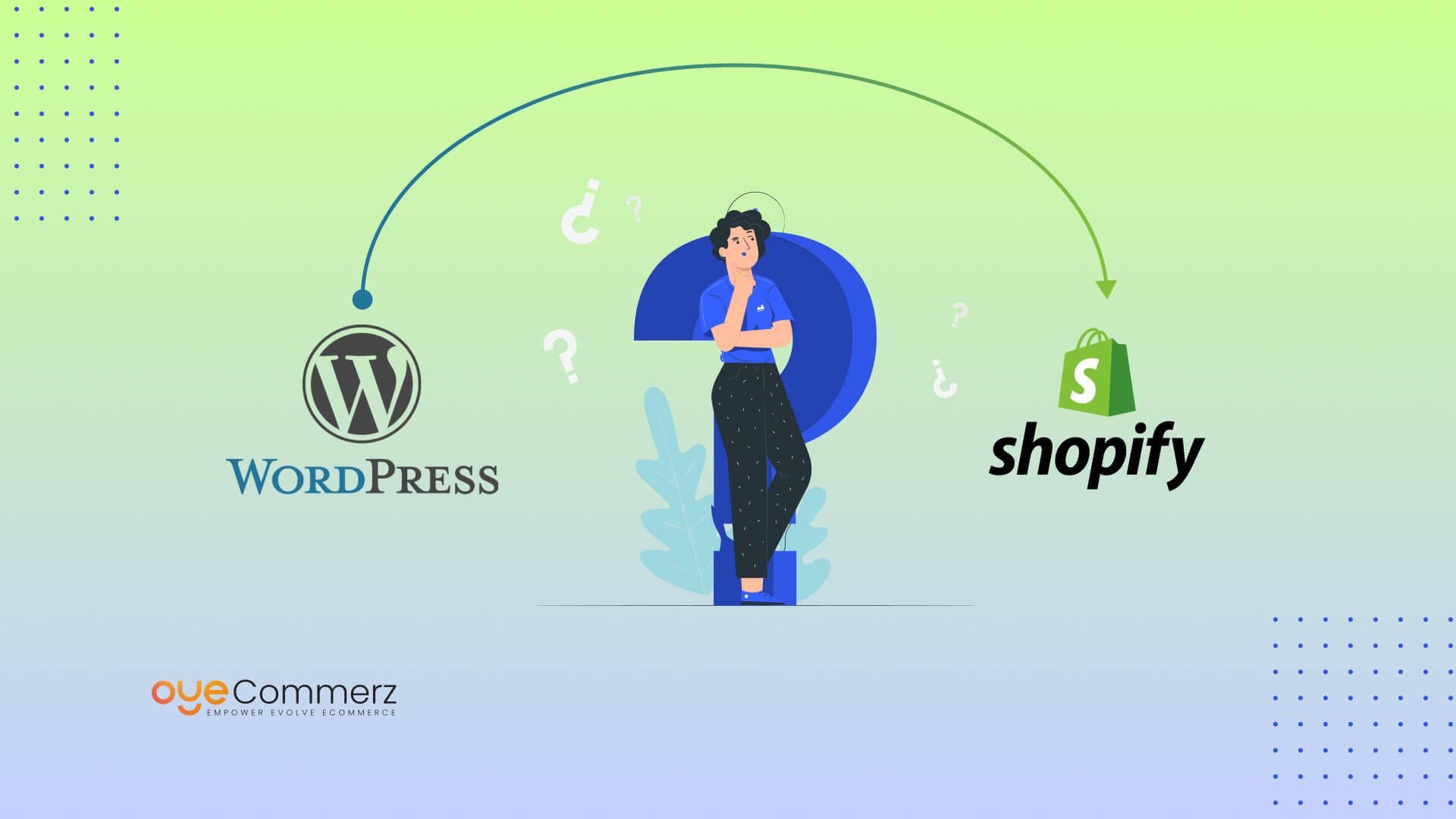Shifting from WordPress to Shopify is an promising step toward streamlining your e-commerce processes. As businesses expand, selecting a platform that supports scalability, UX, and customization is essential. Shopify has emerged as a preferred choice for online merchants, providing unmatched flexibility, security, and user-friendliness. In this guide, we will delve into why this migration is a game-changer, discuss the advantages, and provide practical tips to facilitate a seamless move.
1. Why Switch from WP to Shopify?
The combination of WordPress and WooCommerce, has served countless e-commerce platforms. However, as businesses expand, issues like reliance on plugins, security vulnerabilities, and complex setups often obstruct growth. Shopify, specifically created for e-commerce, addresses these issues with an comprehensive, intuitive solution. Statistics back this transition—Shopify powers over 4.4 million stores globally, with a reported 10% increase in sales performance for many businesses post-switch.
2. Shopify's Advantages for Thriving Online Stores
Shopify’s powerful platform is tailored for expanding businesses. Its standout benefits are:
- Seamless Customization: Shopify offers over 80 expertly crafted themes.
- Integrated Tools: Features like Shopify Payments and integrated SEO streamline operations.
- Global Reach: Currency versatility and localization features empower brands to reach global markets.
Additionally, Shopify boasts an uptime rate of 99.98%, guaranteeing your website is always operational.
3. Preparing for WP to Shopify Migration
Before migrating, evaluate your existing setup. Review product data, customer details, and search engine rankings. Resources such as Shopify’s Migration Kit or external tools can simplify this process. Create a detailed strategy, ensuring all resources—item details, images, and blog content—are ready for seamless import.
4. The Importance of Accurate Data Migration
Data migration is a cornerstone of a successful transition. When moving from WP to Shopify, focus on:
- Product Information: SKU, descriptions, and categories.
- Customer Data: Emails, purchase records, and custom fields.
- Search Engine Considerations: Retain meta tags, URLs, and redirects to maintain search rankings.
Leverage apps like LitExtension to streamline data transfer while reducing mistakes.
5. Tailoring Your Shopify Store to Fit Your Brand
After the move, personalizing your Shopify store helps it reflects your business identity. Utilize Shopify’s drag-and-drop editor to design pages effortlessly. Shopify's themes are optimized for all devices, providing a seamless UX across platforms—a critical factor, given 74% of e-commerce traffic comes from mobile visitors.
6. Maintaining SEO During Migration
SEO is vital for preserving your online presence during migration. Shopify excels in SEO with clean URL structures, built-in optimization tools, and smooth content management. Make sure you:
- Set up URL forwarding for existing links.
- Enhance updated content with keyword-rich content.
- Use Shopify's apps Plug in SEO to monitor performance post-migration.
7. Post-Migration Testing
Once the migration is complete, conduct thorough testing.
Check:- Page load times (Shopify delivers faster speeds in contrast with WP).
- Functionality of payment gateways and checkout processes.
- Mobile responsiveness.
Quality assurance guarantees your store provides Shopify API integration a smooth shopping journey from the start.
8. Real-Life Success Story
One such migration success story is Gymshark, a fitness apparel brand that moved to Shopify. After the switch, the company saw a 60% increase in mobile sales and reduced site downtime. This highlights the capabilities of Shopify in enhancing e-commerce growth.
9. Challenges and Solutions
Migration is not without obstacles, such as information accuracy and adjusting tailored features. However, Shopify’s robust support and third-party experts make overcoming these hurdles manageable. Collaborating with qualified Shopify developers helps guarantee a smooth transition.
10. Making the Switch: The First Step Toward Success
Switching from WordPress to Shopify represents a strategic approach to e-commerce. By addressing scalability, streamlining operations, and improving buyer satisfaction, Shopify empowers businesses to thrive in challenging industries.
Final Thoughts
Switching from WP to Shopify is a strategic move that can significantly boost your online business performance. With a robust migration plan, the appropriate resources, and professional guidance, you can unlock new success milestones.
Ready to make the leap? Let’s discuss how our Shopify migration services can transform your e-commerce platform. Get in touch today, Shopify design and development or consider: Is it time to seize Shopify’s advantages for your store?

Comments on “Seamless WordPress to Shopify Migration: A Comprehensive Roadmap for E-commerce Growth”